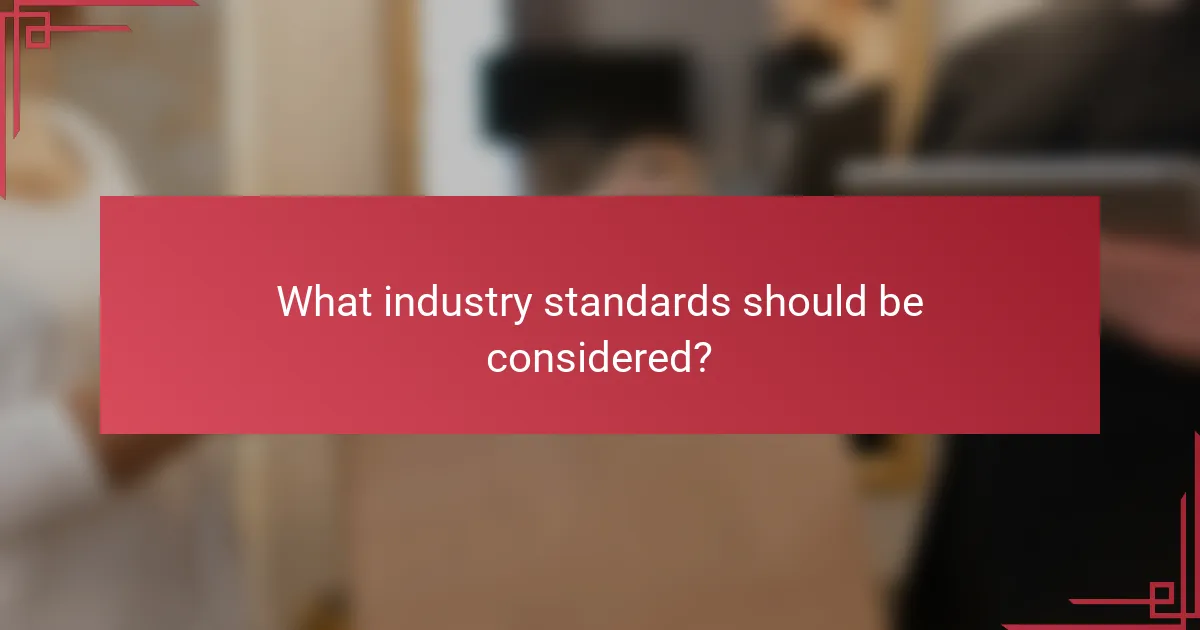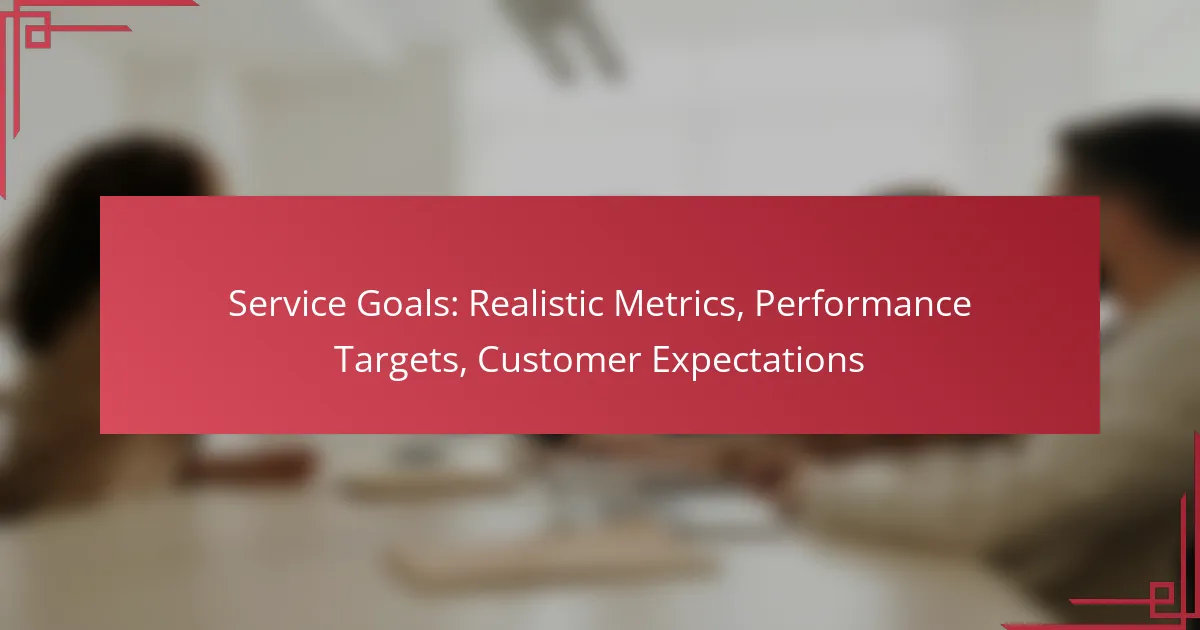Benchmarking service performance is essential for organizations looking to enhance their competitiveness and efficiency. By comparing service metrics against industry standards and competitors, businesses can pinpoint areas for improvement and establish realistic performance goals. This systematic approach not only reveals strengths and weaknesses but also opens up opportunities for growth and innovation in service offerings.

How to benchmark service performance in the UK?
Benchmarking service performance in the UK involves comparing your service metrics against industry standards and competitors to identify areas for improvement. This process helps organizations understand their position in the market and set realistic performance goals.
Identify key performance indicators
Key performance indicators (KPIs) are essential for measuring service performance effectively. Common KPIs include customer satisfaction scores, response times, and service availability rates. Choose KPIs that align with your business objectives to ensure meaningful insights.
For example, if you are in the customer support sector, tracking first response time and resolution time can provide valuable data on service efficiency. Aim for KPIs that are specific, measurable, achievable, relevant, and time-bound (SMART).
Utilize industry-standard metrics
Industry-standard metrics provide a baseline for evaluating service performance. In the UK, metrics like Net Promoter Score (NPS), Customer Effort Score (CES), and Service Level Agreements (SLAs) are widely used. These metrics help you compare your performance against recognized benchmarks.
For instance, if your NPS is significantly lower than the industry average, it indicates a need for improvement in customer experience. Regularly review these metrics to stay aligned with industry expectations.
Implement competitor analysis tools
Competitor analysis tools can help you gather insights on how your service performance stacks up against others in your industry. Tools like SEMrush, SimilarWeb, or industry-specific platforms can provide valuable data on competitors’ performance metrics.
Consider analyzing competitors’ customer reviews and ratings to identify strengths and weaknesses. This information can guide your strategic decisions and help you enhance your service offerings.
Conduct regular performance reviews
Regular performance reviews are crucial for maintaining service quality and achieving continuous improvement. Schedule quarterly or bi-annual reviews to assess your KPIs, industry metrics, and competitor insights.
During these reviews, involve key stakeholders and use the findings to adjust your strategies. This proactive approach ensures that your service performance remains competitive and meets evolving customer expectations.

What are the best practices for competitor analysis?
Best practices for competitor analysis involve systematically gathering and evaluating information about competitors to enhance your own service performance. This process helps identify strengths, weaknesses, and opportunities for improvement in your offerings.
Research direct competitors in the UK
Start by identifying your direct competitors within the UK market. Focus on businesses that offer similar services or products and target the same customer base. Utilize online tools, industry reports, and local business directories to compile a comprehensive list.
Once you have identified your competitors, analyze their market positioning, pricing strategies, and promotional tactics. Pay attention to their market share and customer demographics to understand their strengths and weaknesses relative to your own business.
Analyze competitor service offerings
Examine the range of services provided by your competitors, noting any unique features or value propositions. This analysis should include pricing models, service quality, and additional benefits that may attract customers.
Consider creating a comparison table to visualize differences in service offerings. Highlight aspects such as response times, customer support availability, and any innovative features that set competitors apart. This will help you identify gaps in your own services that could be addressed.
Evaluate customer feedback and reviews
Customer feedback is a vital source of insight into competitor performance. Analyze reviews on platforms like Trustpilot, Google Reviews, and social media to gauge customer satisfaction and identify recurring themes in feedback.
Look for both positive and negative comments to understand what customers appreciate or dislike about competitor services. This information can guide your own service improvements and help you develop strategies to differentiate your offerings in the market.

What industry standards should be considered?
When benchmarking service performance, it is crucial to consider industry standards that provide a framework for quality and efficiency. These standards help organizations measure their performance against competitors and identify areas for improvement.
ISO standards for service quality
ISO standards, particularly ISO 9001, focus on quality management systems and are essential for ensuring consistent service delivery. Organizations can use these standards to establish processes that enhance customer satisfaction and operational efficiency.
Implementing ISO standards involves documenting procedures, conducting regular audits, and continuously improving processes. Companies often find that adhering to these standards can lead to increased customer trust and loyalty.
Benchmarking frameworks like Baldrige
The Baldrige Performance Excellence Framework provides a comprehensive approach to organizational performance improvement. It emphasizes leadership, strategy, customer focus, and results, allowing organizations to assess their performance against best practices.
Organizations can use the Baldrige criteria to identify strengths and weaknesses in their service delivery. Regular assessments against this framework can help drive continuous improvement and foster a culture of excellence.
Service Level Agreements (SLAs)
Service Level Agreements (SLAs) are contracts that define the expected level of service between providers and customers. They typically include metrics such as response times, availability, and performance standards that must be met.
Establishing clear SLAs helps manage customer expectations and provides a basis for accountability. Organizations should regularly review and update SLAs to reflect changes in service capabilities or customer needs, ensuring they remain relevant and effective.

What performance metrics are essential?
Essential performance metrics include customer satisfaction scores, Net Promoter Score (NPS), and first response time. These metrics provide insights into service quality and customer experience, helping businesses identify areas for improvement and benchmark against competitors.
Customer satisfaction scores
Customer satisfaction scores (CSAT) measure how products or services meet customer expectations. Typically gathered through surveys, CSAT scores are expressed as a percentage, with higher scores indicating greater satisfaction. Aim for scores above 80% to be competitive in most industries.
To effectively utilize CSAT, regularly survey customers after interactions and analyze trends over time. This helps identify specific areas needing enhancement, such as product features or service delivery.
Net Promoter Score (NPS)
Net Promoter Score (NPS) gauges customer loyalty by asking how likely customers are to recommend your service to others. Responses are categorized into promoters, passives, and detractors, with the final score calculated by subtracting the percentage of detractors from promoters. A strong NPS is typically above 50.
To improve NPS, focus on addressing feedback from detractors and enhancing the overall customer experience. Regularly track NPS to measure the impact of changes and maintain a customer-centric approach.
First response time
First response time measures how quickly customer inquiries receive an initial reply. This metric is crucial for customer satisfaction, with optimal response times often under five minutes for live chat and within a few hours for email. Reducing response times can significantly enhance customer perceptions of service quality.
To improve first response time, implement efficient ticketing systems and ensure adequate staffing during peak hours. Regularly review response metrics to identify bottlenecks and adjust processes accordingly.

How to choose the right benchmarking tools?
Selecting the right benchmarking tools involves assessing their features, user feedback, and alignment with your specific performance metrics. Focus on tools that not only meet your current needs but also adapt to future requirements.
Evaluate tool features and capabilities
When evaluating benchmarking tools, consider their core features such as data collection methods, reporting capabilities, and integration options with existing systems. Look for tools that offer customizable dashboards and real-time analytics to facilitate quick decision-making.
Additionally, assess the scalability of the tools. If your organization is likely to grow, choose a solution that can handle increased data volumes and more complex analysis without significant additional costs.
Consider user reviews and case studies
User reviews provide valuable insights into the practical performance of benchmarking tools. Look for feedback on usability, customer support, and the effectiveness of the tool in achieving desired outcomes. Websites like G2 and Capterra can be useful for gathering this information.
Case studies from similar industries can also illustrate how specific tools have helped organizations improve their performance metrics. Pay attention to the metrics achieved and the context of those results to gauge relevance to your own benchmarking needs.

What are the common pitfalls in benchmarking?
Common pitfalls in benchmarking include relying on outdated data, failing to account for contextual differences, and neglecting to define clear objectives. These mistakes can lead to misleading conclusions and ineffective strategies.
Relying on outdated or irrelevant data
Using outdated or irrelevant data can skew benchmarking results significantly. It’s crucial to ensure that the data reflects current market conditions and practices. Regularly update your data sources to maintain accuracy and relevance.
For example, if you benchmark against competitors from several years ago, you may miss critical shifts in technology or consumer behavior. Always prioritize recent data to inform your analysis.
Ignoring contextual differences
Contextual differences, such as market size, customer demographics, and regional regulations, can greatly affect performance metrics. Ignoring these factors can lead to inaccurate comparisons and misguided strategies.
For instance, a company operating in a highly regulated market may have different performance standards than one in a less regulated environment. Always consider the context when evaluating competitors.
Neglecting to define clear objectives
Without clear objectives, benchmarking efforts can become unfocused and ineffective. Establish specific goals for what you want to achieve through benchmarking, such as improving customer satisfaction or reducing operational costs.
For example, if your goal is to enhance service delivery, focus on metrics related to response times and customer feedback. Clearly defined objectives will guide your benchmarking process and help you measure success effectively.



